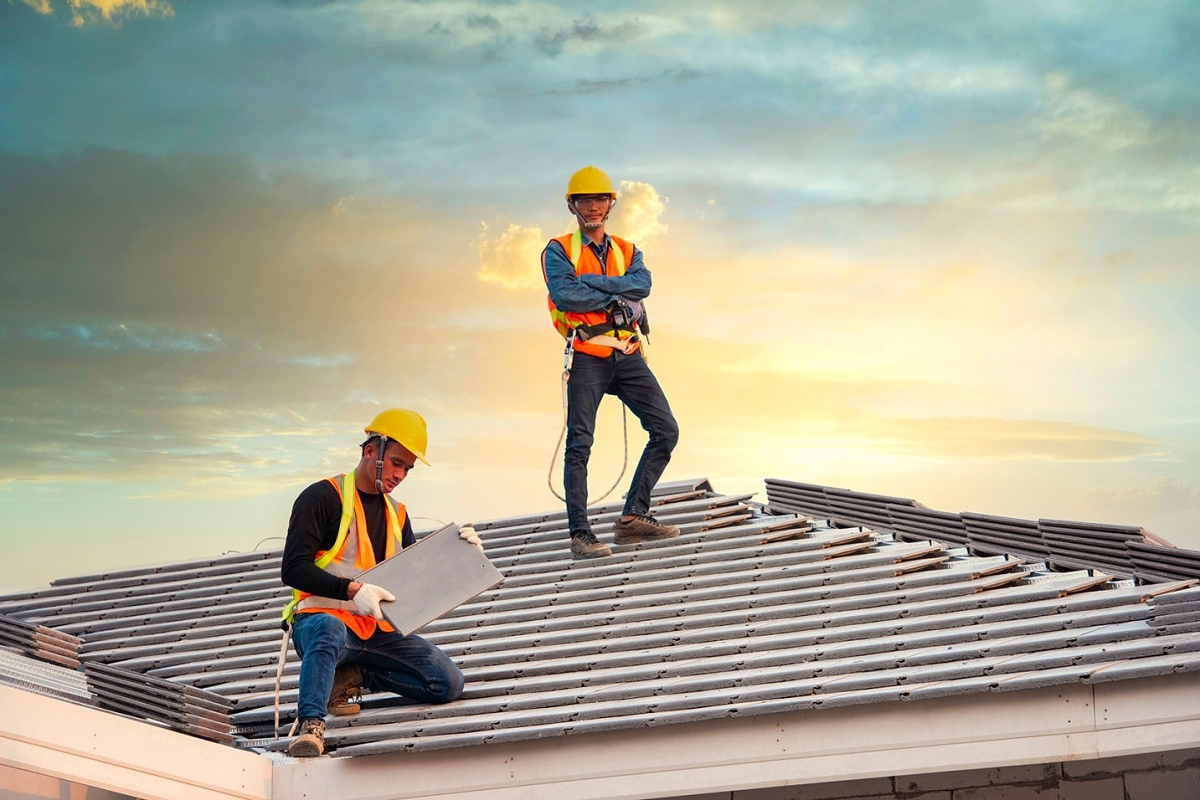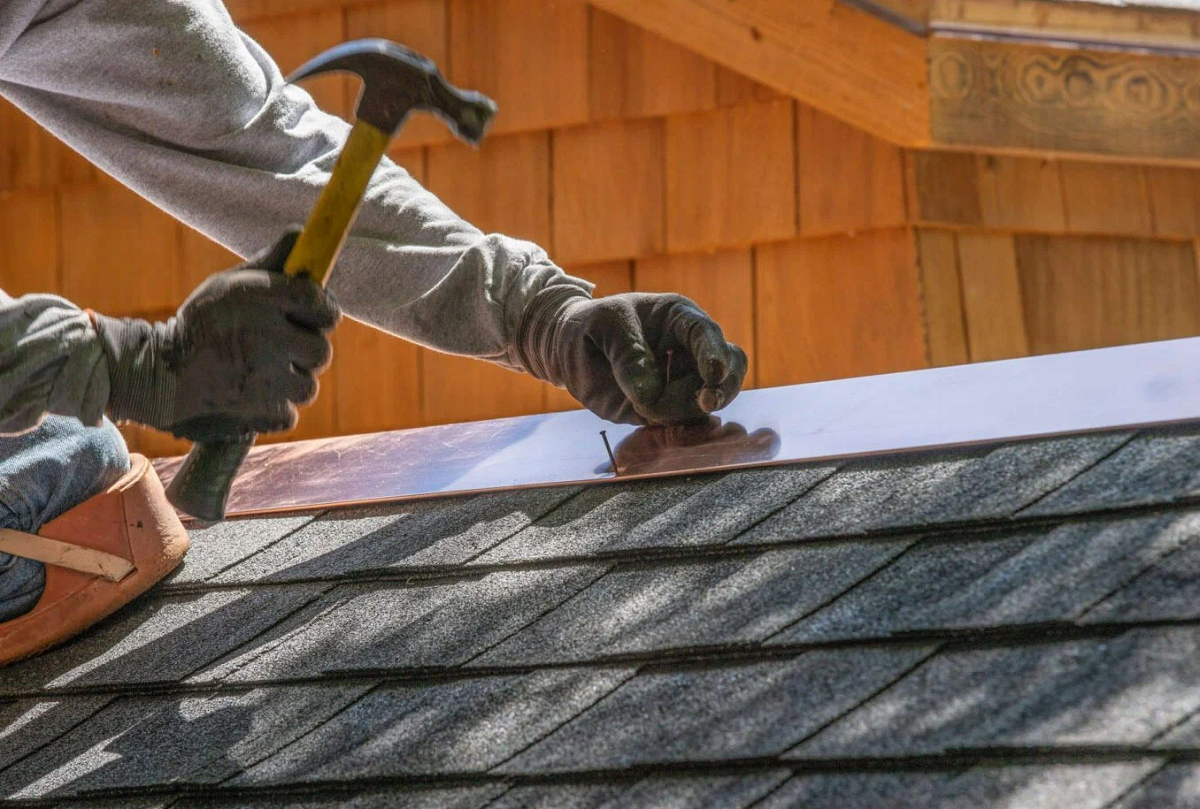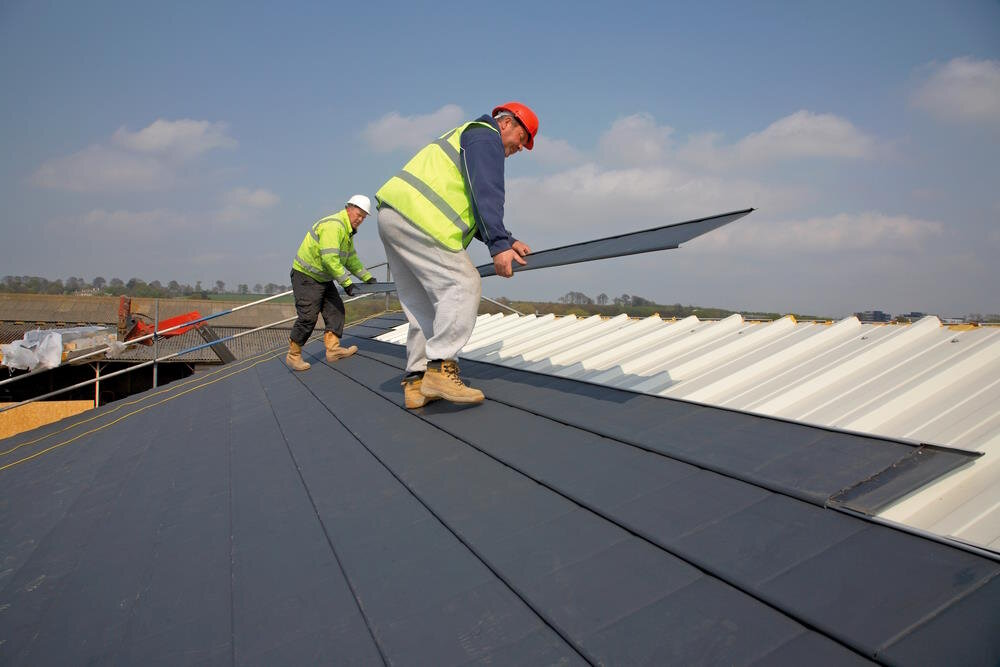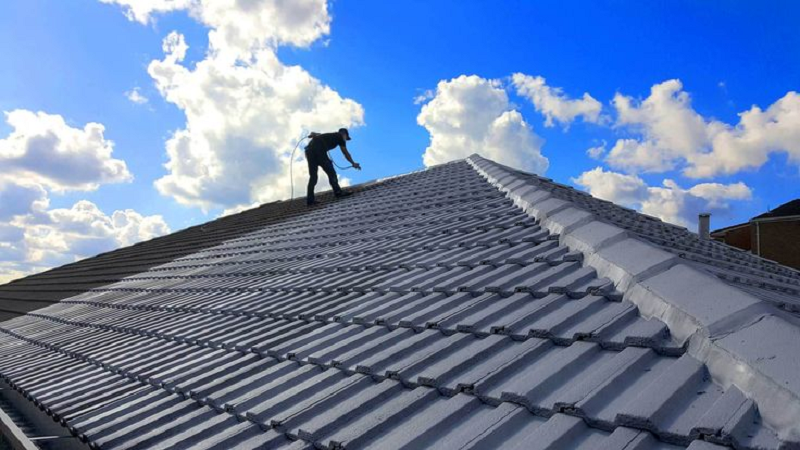Roofing Material Lifespan: What You Need To Know
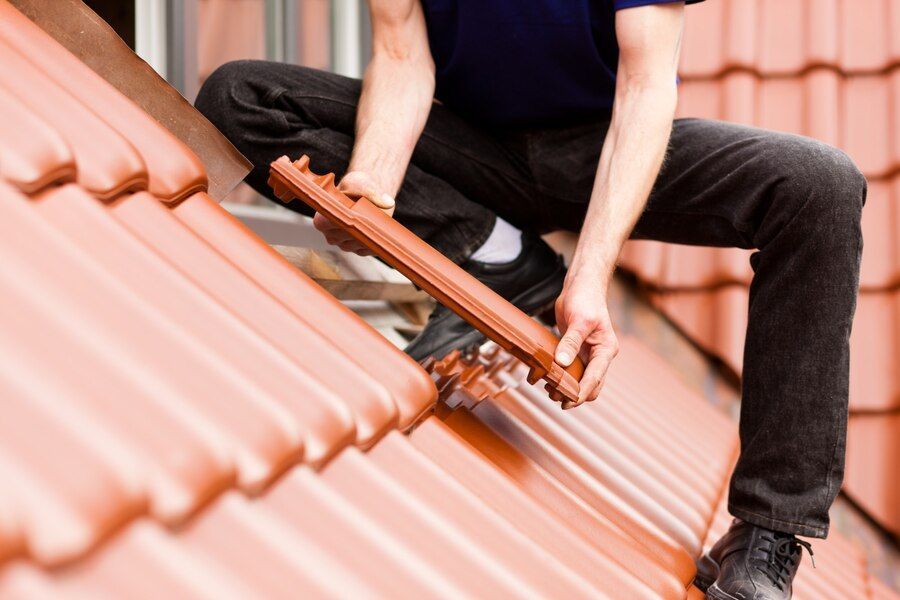
Roofing material lifespan is a critical consideration for homeowners and property managers alike. Your roof serves as the primary defense against the elements, shielding your property from rain, wind, snow, and sunlight. Understanding the lifespan of different roofing materials is essential for making informed decisions about maintenance, repairs, and replacements.
From traditional asphalt shingles to modern metal roofing and eco-friendly options like clay or slate tiles, each material offers a unique balance of durability, cost-effectiveness, and aesthetic appeal. In this comprehensive guide, we'll explore the lifespan of various roofing materials, factors influencing longevity, maintenance tips to extend lifespan, and signs indicating when it's time for a replacement.
Understanding Roofing Material Longevity
Roofing material longevity is a crucial aspect that every homeowner should grasp to ensure their property's structural integrity and longevity. The lifespan of roofing materials refers to how long they can effectively protect a building from the elements before needing replacement.
It's essential to understand that different roofing materials have varying lifespans, influenced by factors such as material quality, installation technique, climate, and maintenance. By comprehending the lifespan of various roofing materials, homeowners can make informed decisions when selecting the most suitable option for their property, considering factors like durability, cost-effectiveness, and aesthetic appeal.
Factors Influencing Roof Lifespan
Several factors play a significant role in determining the lifespan of a roof. Firstly, the quality of materials used and the craftsmanship during installation are critical. High-quality materials and proper installation techniques can significantly extend the lifespan of a roof.
Additionally, climate and weather conditions have a profound impact on roof longevity. Areas prone to extreme temperatures, heavy rainfall, or high winds may experience accelerated roof deterioration. Proper ventilation and insulation also influence roof lifespan by preventing moisture buildup and reducing thermal stress. Regular maintenance and timely repairs are crucial for prolonging the lifespan of a roof, as neglect can lead to minor issues escalating into major problems over time.
Asphalt Shingles: Durability and Maintenance
Asphalt shingles are durable, versatile, and require minimal maintenance, making them a popular roofing choice. Key points to consider:
- Durability: Resistant to various weather conditions, particularly high-quality fiberglass-reinforced options.
- Lifespan: Typically lasting 15 to 30 years with proper maintenance and inspection.
- Maintenance: Regular inspections and prompt repairs for damaged shingles, flashing, or sealants are essential.
- Cleaning: Regular removal of debris and gentle cleaning to preserve shingle integrity.
- Protective Coatings: Applying protective coatings can enhance durability and weather resistance, prolonging lifespan.
Exploring Metal Roofing: Longevity and Benefits
Metal roofing has gained popularity in recent years due to its exceptional durability, longevity, and energy efficiency. Typically made from steel, aluminum, or copper, metal roofs can last 40 to 70 years or more with proper maintenance. The longevity of metal roofing is attributed to its resistance to weathering, corrosion, and pest infestations. Metal roofs are also fire-resistant and can withstand extreme weather conditions such as heavy rain, snow, and high winds.
Moreover, metal roofing is environmentally friendly, as it can be recycled at the end of its lifespan. Other benefits of metal roofing include energy efficiency, as it reflects solar heat, reducing cooling costs in hot climates, and increasing energy savings over time.
The Eco-Friendly Appeal of Clay and Slate Tiles
Clay and slate tiles are renowned for their timeless elegance, durability, and eco-friendliness, making them popular choices for roofing materials. Clay tiles, made from natural clay fired in kilns, have been used for centuries and can last 50 to 100 years or more with proper care. Similarly, slate tiles, quarried from natural stone, boast a lifespan of 75 to 200 years, making them one of the longest-lasting roofing materials available.
Beyond longevity, clay and slate tiles are environmentally sustainable, as they are made from natural materials that can be recycled or reused. Their natural composition also makes them resistant to fire, pests, and rot, further enhancing their durability and lifespan. While clay and slate tiles may have higher upfront costs compared to other roofing materials, their longevity and eco-friendly properties make them a worthwhile investment for environmentally conscious homeowners.
Wood Shingles And Shakes: Lifespan And Maintenance Considerations
Wood shingles and shakes offer a timeless aesthetic to residential properties, but their longevity and performance depend heavily on proper maintenance. Typically crafted from cedar, redwood, or pine, these roofing materials boast a lifespan of 20 to 50 years. However, to maximize their lifespan and maintain their natural beauty, homeowners should adhere to specific maintenance considerations:
- Regular Inspections: Conduct routine inspections to check for signs of damage, such as cracks, warping, or rot.
- Prompt Repairs: Address any issues promptly to prevent minor problems from escalating into major damage.
- Treatments: Apply preservatives and protective coatings to enhance durability and resistance to moisture, UV rays, and fungal growth.
- Cleaning: Remove debris, moss, algae, and other organic matter from the roof surface to prevent moisture retention and deterioration.
- Proper Installation: Ensure proper installation techniques are followed to maximize the longevity and performance of wood shingles and shakes.
By following these maintenance considerations and investing in proper care, homeowners can extend the lifespan of their wood shingle or shake roof while preserving its natural charm and integrity.
Synthetic Roofing Materials: Lifespan And Sustainability
Synthetic roofing materials, such as polymer composites, offer a durable and eco-friendly alternative to traditional roofing materials. Made from recycled plastics and rubber, synthetic roofs mimic the appearance of natural materials like slate, wood, or clay while offering superior durability and longevity. Synthetic roofing materials typically have a lifespan of 30 to 50 years and are resistant to weathering, UV damage, and pests.
Moreover, synthetic roofs are lightweight, making them easier to install and transport compared to natural materials. Their sustainability stems from their use of recycled materials and their ability to be recycled at the end of their lifespan, reducing waste and environmental impact. Additionally, synthetic roofing materials require minimal maintenance and are resistant to mold, mildew, and algae growth, making them an attractive option for environmentally conscious homeowners seeking a long-lasting and low-maintenance roofing solution.
Impact of Climate and Environmental Conditions On Roof Longevity
Climate and environmental conditions play a significant role in determining the lifespan of a roof. Extreme temperatures, heavy rainfall, high winds, and prolonged exposure to sunlight can accelerate roof deterioration and shorten its lifespan. For example, roofs in regions prone to frequent rain or snow may experience water damage, leaks, and mold growth if not adequately protected and maintained.
Similarly, roofs in hot climates may suffer from thermal stress, leading to shingle warping, cracking, and premature aging. Environmental factors such as air pollution, saltwater exposure, and nearby vegetation can also impact roof longevity by contributing to corrosion, staining, and biological growth. Understanding the specific climate and environmental challenges in your area is essential for selecting the most suitable roofing material and implementing preventive measures to prolong its lifespan.
Importance Of Regular Roof Inspections And Maintenance
Regular roof inspections and maintenance are vital components of responsible homeownership, ensuring the longevity and structural integrity of your property. Here's why they're crucial:
- Prolongs Roof Lifespan: Regular inspections and maintenance help identify and address minor issues before they escalate, extending the life of your roof.
- Prevents Costly Repairs: By catching problems early, you can avoid more extensive damage that may require expensive repairs or even a full roof replacement.
- Protects Property and Belongings: A well-maintained roof prevents water leaks and structural damage, safeguarding your home and possessions from potential harm.
- Enhances Energy Efficiency: A properly maintained roof with adequate insulation and ventilation can improve energy efficiency, reducing heating and cooling costs.
- Ensures Safety: Regular inspections ensure your roof is structurally sound, minimizing the risk of accidents or injuries caused by roof-related issues.
Regular roof inspections and maintenance are essential investments that pay dividends in the long run, preserving the value and comfort of your home while providing peace of mind for you and your family.
Signs Your Roof Needs Replacement: Knowing When to Act
Recognizing the signs indicating that your roof needs replacement is crucial for preventing extensive damage to your property and ensuring the safety and comfort of occupants. Some common indicators that your roof may need replacement include visible signs of aging, such as curling, cracking, or missing shingles, as well as sagging or buckling roof sections. Water stains on interior ceilings and walls, as well as evidence of water infiltration in
At the conclusion of our discussion on roofing material longevity, it's evident that a thorough understanding of the factors influencing roof lifespan and the characteristics of different roofing materials is essential for homeowners. By considering elements such as material quality, installation techniques, climate, and maintenance, individuals can make informed decisions when selecting roofing materials best suited to their needs.
Whether opting for traditional options like asphalt shingles or exploring eco-friendly alternatives such as clay or metal roofing, each choice carries its own set of benefits and considerations. Moreover, regular roof inspections and maintenance play a crucial role in prolonging the lifespan of any roofing system, helping to identify and address issues before they escalate. Ultimately, by staying vigilant and proactive in caring for their roofs, homeowners can ensure the longevity, durability, and performance of their most valuable asset – their home.
Don't leave the safety and integrity of your home to chance. Contact Avalon Roofing Services today for all your roofing needs. With over 30 years of experience serving Manteca, we've built a reputation for excellence and reliability. Our accreditation with the Better Business Bureau as an A+ roofing contractor is a testament to our commitment to quality and customer satisfaction.
Whether you need repairs, maintenance, or a full roof replacement, our team of professionals is here to help. Your roof is more than just a structure – it's an investment in your home and your family's safety. Trust Avalon Roofing Services to protect what matters most to you. Contact us at contact@avalonroofing209.com or call our office number at (209) 380-1275. For emergencies after hours, reach us at (209) 483-7593. Don't wait until it's too late – let us safeguard your home today.



